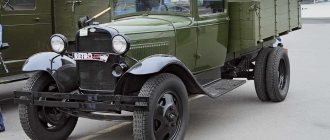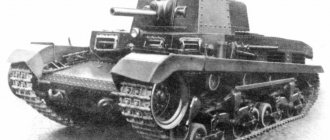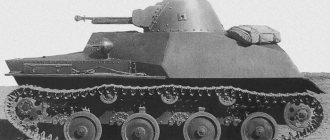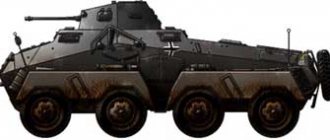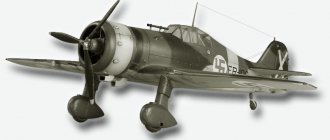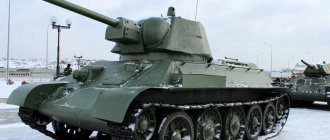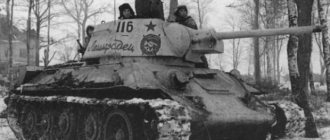To this day, the most advanced and effective military half-track vehicles remain the German multi-purpose transporter tractors and the combat variants created on their basis. They were developed by seven German companies appointed by the military department, and then 10 more companies from Germany, Austria, Czechoslovakia and Italy joined in the production. The development of the first six basic families for towing trailers or artillery systems weighing from 1 to 18 tons over rough terrain began in Germany back in 1934. In the same year, the first test samples of basic machines appeared, and by the beginning of World War II, mass production of the entire range began.
Half-track tractors of the first six classes had units and components similar in general design, and were divided into three groups according to the mass of towed guns - light (1-3 tons), medium (5-8 tons) and heavy (12-18 tons). All were maximally unified among themselves, and in a number of units - with the main German tanks and trucks. The main structural elements of all German half-track vehicles were a load-bearing spar or welded chassis structure, water-cooled Maybach gasoline engines with overhead camshafts, a dry double-disc clutch, a manual transmission unit with a multiplier gearbox and a final drive with a self-locking differential and on-board brake drums. movers. The front steered non-driving wheels with pneumatic tires, which did not have brakes, were suspended on a transverse semi-elliptical spring and served to slightly change the angle of direction of movement (up to 6°). Most vehicles had a main air brake system with a brake system for trailer wheel braking. The caterpillar design with a front drive sprocket was equipped with characteristic disk support and at the same time support rollers with rubber tires, staggered and suspended on individual trailing arms and transverse torsion bars. Some heavy vehicles were equipped with longitudinal semi-elliptical balance springs for the propulsion suspension. Cast steel track tracks were mounted on needle bearings with their own oilers and were equipped with external rubber running shoes. The main design feature was a steering mechanism with a special system for braking one of the tracks to make a sharp turn or even turn on the spot. It was developed by the American Weserhutte.
When used in combat on severe off-road conditions, the most advanced systems of half-track tractors and armored vehicles turned into their main disadvantages: the steering in reality was crude and unreliable, the vehicles themselves turned out to be too heavy, poorly maneuverable and quite difficult to maintain and repair the most capricious and precise components in the field. . At the height of the war, when Germany gradually began to slide into a state of deep crisis, in conditions of austerity, lack of financial resources and basic raw materials, the production of such expensive machines became unprofitable and burdensome. Thus, since 1943, on the basis of a number of serial tractors, simplified half-track “heavy Wehrmacht tractors” SWS (Schweren Wehrmacht-Schlepper) with so-called ersatz cabs and side bodies were produced. Such vehicles, assembled in relatively small quantities, were unable to interrupt the serial production of all previous types of half-track tractors and armored vehicles, which were assembled at least until the end of 1944, and in some factories until March-April 1945. In total, in 1934-1945, all German enterprises assembled 73.6 thousand special half-track tractors and chassis of all types (without the Maultir and RSO series), including 23.5 thousand armored vehicles. In 1940-1945 alone, the production of tractors amounted to 47.3 thousand units - about two-thirds of the total production volume.
By the end of World War II, the vast majority of German half-tracks had been destroyed. Even in wartime, it became clear that such technology had exhausted all its capabilities, so after the war, designers from all over the world never returned to the outdated, very costly and ineffective concept of a half-track drive.
NSU NK-101 Sd.Kfz.2 (1940-1944)
The small company NSU from Neckarsulm first produced knitting machines, bicycles and motorcycles, since the First World War it produced light staff vehicles, ambulances and trucks, and at the end of the 1920s it switched to motorcycles. At the beginning of the Second World War, quite unexpectedly, she made an important contribution to the field of military technology, creating a unique and still only half-tracked vehicle in the world - the “crawler motorcycle” (Ketten-Kraftrad, or Ketten-Krad) - a kind of cross between a motorcycle, a car and a tracked vehicle. tractor. It was super light...
Read more
Demag D7 Sd.Kfz.10 (1937-1944)
The engineering company had the honor of producing the first lightest half-track tractor Sd.Kfz.10 of the basic family, which included six unified vehicles. This company traces its history back to a mechanical workshop founded in 1819 in the city of Vetter, in the Ruhr industrial region. Since 1910, it has produced self-propelled wheeled and crawler cranes, and then the design of the most successful crane crawler propulsion unit, Demag, was patented and formed the basis for the entire family of half-track tractors and armored personnel carriers of the Wehrmacht, and ...
Read more
Hansa-Lloyd HLkl5 Sd.Kfz.11 (1937-1938)
In 1934, the German military department decided to appoint the lead developer and manufacturer of light half-track transporter tractors for towing artillery pieces weighing up to 3 tons, which received the military index Sd.Kfz.11 and entered the family of similar vehicles of five other classes. Things were going very hard for this relatively small company, which was already in a pre-crisis situation, so in 1936 it was entrusted with the assembly of medium conveyors HLm10 (Sd.Kfz.7) of the 8-ton class, identical to KMm10 machines. ...
Read more
Borgward HLkl6 Sd.Kfz.11 (1938-1944)
In 1938, serial production of 3-ton half-track transporter tractors HLk15 (Sd. Kfz.11) switched to a new one that had left the scene. In the same 1938, Karl Borgward managed to put into production a modernized version of the HLkI6, which was initially equipped with a more powerful Maybach NL38 gasoline engine (3.8 l, 90 hp) with a double carburetor, and the second series, assembled in 1939- 1944, equipped with an NL42 engine (4.2 l, 100 hp). Otherwise, these options were no different from the first HLk15 series, only with a more powerful...
Read more
Tractors and tractors | Germany
Half-track motorcycle SdKfz 2 (Kettenkrad HK-101)
The motorcycle was originally developed for use in parachute and mountain ranger units. It was also produced by Shtewer since 1940 and was intended for towing light artillery pieces and various kinds of trailers, for laying cables, for towing aircraft, etc. In addition to the basic model, two specialized ones were produced - “Kfz 2/1” with equipment for transporting field cables and “Kfz 2/2” with equipment for transporting heavy field cables. The motorcycle was a kind of hybrid of a motorcycle and a tracked tractor. There was a driver's seat in the front part of the car's hull, and two more seats were equipped in the rear part of the hull. Control was carried out using the front wheel mounted in a motorcycle-type fork. The vehicle could also make tight turns using tracks. In total, about 9.4 thousand cars were produced. Vehicle performance characteristics: length – 3 m; width – 1 m; height – 1.2 m; weight – 1.2 t; load capacity – 350 kg; engine type – carburetor 4-cylinder in-line liquid-cooled engine “Opel Olimpia 38”; engine power – 36 hp; speed on the highway – 62 km/h; Power reserve – 260 km; crew - 2 - 3 people.
Half-track tractor Sd.Kfz.3 (Opel-Maultier)
The tractor was produced in 1942-1945. , “Klockner-Humboldt-Deutz”, “Opel” and “Daimler-Benz” in three versions depending on the truck used to build the car: “Sd.Kfz. 3a" - based on a 2-ton Opel truck; "Sd.Kfz. 3b" - based on a 2-ton Ford truck; "Sd.Kfz. 3c" - based on the 2-ton KHD truck. A Carden-Loyd type tracked undercarriage was used as propulsion. A total of 1,870 vehicles were produced. Performance characteristics of the tractor: length – 6 m; width – 2.3 m; height – 2.5 m; wheelbase - 3.6 m; weight – 6.6 t; payload – 2.9 t; engine – 6-cylinder, petrol; engine power – 68 hp; fuel tank capacity – 82 l; Power reserve – 200 km; speed on the highway – 38 km/h; crew – 2 people.
Half-track tractor Sd.Kfz.6
The artillery tractor was produced since 1945 by Daimler-Benz. Depending on its purpose, the tractor was produced with one of two types of body. The first (Sd.Kfz.6/1) had a body with a charging box equipped in its rear part, in which ammunition for the towed gun was transported. In the second (PF-10, PF-11 and PF-12) it was equipped with a body for transporting personnel, engineering equipment was located on a towed trailer. On both types of bodies, benches for accommodating personnel were installed across the longitudinal axis of the vehicle, and there were cutouts on both sides of the body for quick landing of troops. To protect from rain and snow, a canvas awning was deployed over the body and cabin. The tractor was used to tow light 105 mm howitzers and 75 mm anti-tank guns. It was also used as a self-propelled gun and self-propelled gun. A total of 3,660 vehicles were produced. Performance characteristics of the tractor: length – 6.3 m; width – 2.3 m; height – 2.5 m; weight – 7.5-9 tons; engine type - carburetor 6-cylinder water cooling "Maybach HL 54-TUKRM"; engine power – 90 – 115 hp; specific power – 12.7 hp/t; speed on the highway – 50 km/h; Power reserve – 290 km; crew – 1 person; number of seats for people – 6 – 14.
Half-track tractor Sd.Kfz. 7
The tractor was developed and mass-produced since 1933. It was used to tow anti-aircraft guns, heavy field guns and howitzers, and also as a self-propelled gun. It was equipped with a winch with a lifting capacity of 3.5 tons. The tractor was used in Brazil and Bulgaria. In Italy, 250 vehicles of its own version of the tractor were produced under the designation “Semincingolato Breda Tipo 61”. A total of 12,187 vehicles were produced. Performance characteristics of the tractor: length – 6.9 m; width – 2.4 m; height – 2.6 m; weight – 9.7 t; ground clearance - 400 mm; weight of towed cargo – 8 tons; engine type - 6-cylinder petrol "Maybach HL 52/57/62/64"; engine power – 140 hp; speed on the highway – 50 km/h; fuel tank capacity – 215 l; Power reserve – 250 km; crew – 1 person; number of seats for transporting people – 12.
Half-track tractor Sd.Kfz. 8
The tractor was developed and began mass production in 1938. The tractor was used to tow anti-aircraft guns, heavy field guns and howitzers, and also as a self-propelled gun. It was equipped with a winch with a lifting capacity of 3.5 tons. The tractor was used in Brazil and Bulgaria. In Italy, 250 vehicles of its own version of the tractor were produced under the designation “Semincingolato Breda Tipo 61”. In total, about 4 thousand cars were produced.
Half-track tractor Sd.Kfz. 8
Performance characteristics of the tractor: length – 6.9 m; width – 2.4 m; height – 2.6 m; weight – 9.7 t; ground clearance - 400 mm; weight of towed cargo – 8 tons; engine type - 6-cylinder petrol "Maybach HL 52/57/62/64"; engine power – 140 hp; speed on the highway – 50 km/h; Power reserve – 250 km; crew – 1 person; number of seats for transporting people – 11.
Half-track tractor Sd.Kfz. 9
The heavy tractor was produced by Vomag and Tatra since 1936. and was intended for towing heavy guns of the 24-cm Kanone 3 type or FlaK 18 anti-aircraft guns. The car had an open body that could be covered with an awning, the front glass was folded forward or removed. A winch was installed under the cargo platform. The engine compartment and driver's cabin were completely armored with sheets of rolled steel 8-14.5 mm thick. Known variants of the tractor: “Sd.Kfz. 9/1" (with a crane with a lifting capacity of 6 tons) and "Sd.Kfz. 9/2" (with 10 t tap). The tractors were also in service with the Romanian army. In total, about 2.7 thousand cars were produced. Performance characteristics of the tractor: length – 8.3 m; width – 2.6 m; height – 2.9 m; ground clearance - 440 mm; weight - 15.3 tons; engine – 12-cylinder, water-cooled petrol “Maybach HL”; engine power - 230 - 270 hp; load capacity – 2.6 t; fuel tank capacity – 290-310 l; Power reserve – 260 km; speed on the highway – 50 km/h; traction force – 18 t; crew – 2 people; number of seats for transporting people – 6.
Half-track tractor Sd.Kfz. 10
The tractor was produced since 1938 by Adlerwerke, Büssing-NAG, MWC and Saurerwerke. The tractor was used as a platform for self-propelled guns, self-propelled guns and other specialized vehicles. The following modifications are known: “Sd.Kfz. 10/1", "Sd.Kfz. 10/2", "Sd.Kfz. 10/3", "Sd.Kfz. 10/4", "Sd.Kfz. 10/5". The driver and commander of the vehicle were located in front in an open cabin, separated from the body by a low partition. The artillery crew was located in the back. To protect from rain and snow, a canvas awning was deployed over the body and cabin. The tractor was also used in Romania. In total, from 1939 to 1945, about 14.7 thousand vehicles were produced, of which 7326 chassis were used to build the Sd.Kfz.250 armored personnel carriers. Performance characteristics of the tractor: length – 4.8 m; width – 1.9 m; height – 2 m; weight – 4.9 t; engine type - 6-cylinder, water-cooled petrol "Maybach HL-42 TRKM"; engine power – 100 hp; specific power – 21.3 hp/t; speed on the highway – 65 km/h; Power reserve – 300 km; crew – 2 people; number of seats for transporting people – 6.
Half-track tractor Borgward HLkl6 (Sd.Kfz.11)
The tractor was produced in 1936-1944. , "Skoda", "Adler" and "Wanderer". It was intended to tow medium guns. To protect from bad weather, a canvas awning was deployed over the body and cabin. There were the following modifications of the tractor: “Sd.Kfz. 11/1", "Sd.Kfz. 11/2", "Sd.Kfz. 11/3", "Sd.Kfz. 11/4", "Sd.Kfz. 11/5". Based on the tractor chassis, the medium armored personnel carrier “Sd.Kfz” was created. 251". A total of 9028 vehicles were produced. Vehicle performance characteristics: length – 6 m; width – 2.1 t; height – 1.8 m; curb weight – 8 t; load capacity – 1.8 t; weight of towed cargo – 3 tons; engine type – 6-cylinder water-cooled carburetor “Maybach HL-42 TRKM”; engine power – 90-100 hp; maximum speed – 53 km/h; Power reserve – 300 km; crew – 1 person; number of seats for transporting people – 9.
Crawler tractor Raupenschlepper Ost (RSO/01)
Crawler tractor Raupenschlepper Ost RSO/03
The tractor was developed on the basis of the Soviet tractors "STZ-5" and "Stalinets-2", receiving the designation "Raupenschlepper Ost" (Eastern tractor). It was intended for use in conditions with a lot of snow and on washed out roads. The tractor has been produced since 1942. The “RSO/01” and “RSO/03” modifications are known, differing in weight and engine power. The tractors were used to tow 50-mm and 75-mm anti-tank guns, light howitzers, and even 88-mm 8.8-cm Pak-43 anti-tank guns. A 75-mm anti-tank self-propelled gun was created on the basis of the tractor. A total of 28 thousand cars were produced. Performance characteristics of the tractor: length – 4.4 m; width – 2 m; height – 1.5 m; weight – 5.2 – 5.5 t; ground clearance - 550 mm; load capacity – 1.7 t; trailer weight – 3 tons; engine type – 8-cylinder “Steyr”; engine power – 66 – 85 hp; speed on the highway – 20 km/h; Power reserve – 300 km; crew 2 people.
Wheel tractor Krupp-Protze Kfz 69
The tractor was produced in two modifications - “L-2H 43” (1933-1936) and “L-2H 143” (1937-1941). The tractor was used to tow light infantry, anti-tank and anti-aircraft guns. In some cases, the guns were installed directly in the back of the tractor. A total of 3.2 thousand cars were produced. Performance characteristics of the tractor: length – 5.1 t; width – 2 m; height – 1.9 m; weight – 2.5 t; ground clearance – 225 mm; wheel formula – 6x4; engine type – 4-cylinder petrol air-cooled “Krupp M-304”; engine power - 60 hp; speed on the highway – 70 km/h; load capacity – 1.2 t; towed trailer weight – 1 t; fuel volume – 110 l; Power reserve – 450 km; crew – 4 people.
Artillery tractor Artillerie Schlepper 35(t)
In 1943-1945. Czechoslovak tanks "Pz 35(t)" were converted into tractors under the designation "LT vz. 35". The tank's turret was dismantled, and a canvas tent was attached in its place. In total, at least 12 vehicles were converted. Performance characteristics of the tractor: length – 4.9 m; width – 2.1 m; height – 2.4 m; engine type – 4-cylinder petrol with water cooling “Skoda T-11”; engine power – 120 hp; speed on the highway – 35 km/h; Power reserve – 190 km; weight of towed cargo – 12 tons; crew – 3 people.
Half-track tractor sWS (schwerer Wehrmachtschlepper)
The tractor was produced since 1943 by Ringofer-Tatra. The first tractors were unarmored vehicles with a canvas top, equipped with a wooden cab and body. The second version, which began production in 1944, featured an armored engine compartment and a low-profile driver's cabin. The weight of this vehicle was 13.5 tons. The first version of the vehicle was used as an artillery tractor, the second as the basis for the construction of self-propelled guns. A total of 825 vehicles were produced. Performance characteristics of the tractor: length – 6.9 m; width – 2.5 m; height – 2 m; unarmored weight - 9.5 tons; ground clearance – 465 mm; engine type – 6-cylinder petrol with water cooling “Maybach H-42 TRKMS”; engine power – 100 hp; speed on the highway – 27 km/h; Power reserve – 300 km; load capacity – 4 t; crew – 2 people; number of seats for transporting people – 10.
Tractor Hanomag SS – 55
The average short-wheelbase tractor was produced in 1934-1941. in six modifications. It had a short cabin and was used to tow trailers or aircraft weighing up to 15 tons. The tractor was equipped with a winch with a traction force of 3.5 tons. Performance characteristics of the vehicle: length - 4.5 - 5.7 m; width - 2.2 - 2.4 m; height – 2.5 m; curb weight - 3.9 - 4.9 tons, gross weight - 4.7 - 5.4 tons; wheelbase – 2.7 – 4 m; transmission – 4-speed gearbox; engine type – 4-cylinder, diesel; engine power - 55 - 60 hp; fuel tank capacity – 350 l; towed weight – 15 t; speed on the highway - 25 - 40 km/h.
Tractor Hanomag SS-100W (Gigan)
The short-wheelbase civil ballast tractor was produced in 1936-1944. and was intended for towing guns and aircraft. It had a double 7-seater 4-door cabin for transporting couplers or crews of towed equipment. Behind the cabin there were spare wheels and a platform for laying concrete or metal ballast slabs. The tractor was equipped with a 3.5-ton winch with a cable 80 m long. A simplified 2-door model is known under the designation “SS-100N”. Vehicle performance characteristics: wheelbase – 3 m; engine type – diesel; engine power – 100 hp; transmission – 4-speed gearbox; maximum speed – 40 km/h; towed weight – 20 tons.
Lanz Eil-Bulldog tractor
Lanz Eil-bulldog tractor
in 1934-1944 A series of civilian multi-fuel tractors were produced under the designations “HR-8” and “HR-9”, which were used by troops as road or airfield tractors. The tractors were produced in various modifications: with an open cab, with a tent covering the cab and with a metal cab. A winch was installed on some models. Performance characteristics of the vehicle: wheelbase – 2 m; weight – 3.8 t; engine – single-cylinder, horizontal with thermosyphon cooling; engine power - 35 - 55 hp; transmission – 6-speed gearbox; maximum speed – 22 – 33 km/h; towed weight – 5-10 tons.
Aerodrome tractor Kaeble Z2S
In 1936, wheeled tractors were converted into Z-2S airfield tractors for the Luftwaffe. The tractor was equipped with a winch, which was mounted above the rear axle. A total of 196 vehicles were built. Performance characteristics of the tractor: length – 3.4 m; width – 2 m; height – 2.1 m; total weight – 4.2 t; engine – 2-cylinder diesel; engine power – 36 hp; speed on the highway is 25 km/h.
Tractor Kaeble Z-6WA/ Z-8V2A
In 1936-1937 manufactured 30 short-wheelbase airfield ballast tractors "Z-6WA". The tractor was equipped with a winch with a traction force of 4.5 tons. It had an open body for ballast and two rear places for couplers. Performance characteristics of the tractor: engine – diesel; engine power – 100 hp; transmission – 5-speed gearbox; wheel formula – 6x4. In 1938-1939 120 more cars were produced with a 130-horsepower engine and a 6-speed gearbox.
Faun ZR tractor
Faun ZRS tractor
In 1938-1944.
short-wheelbase two-axle road vehicles "ZR" were produced. They were used to tow aircraft or trailers. They had a double 4-door cab with seven seats and a short body to accommodate couplings and ballast. For sorting cars at railway stations, the “ZRS” version was used, which was a shunting locomotive capable of operating on rails or on regular roads. Its equipment included push plates for moving cars or cargo, four railroad buffers with a coupling device, and an outlet from its own pneumatic system to operate the car brakes. Performance characteristics of the tractor: length – 6.5 m; width – 2.4 m; height – 2.6 m; wheelbase - 3.6 m; weight – 10.6 t; engine - 6-cylinder diesel "KHD F-6M 517"; engine power – 150 hp; transmission – 4-speed gearbox; weight of towed cargo – 40 tons; travel speed on the highway is 60 km/h, on rails – 39 km/h. Share to:
Ganomag Hk16 Sd.Kfz.11 (1938-1944)
The most active phase of military activity came quite by accident shortly before the outbreak of World War II, when the bankrupt company was bought out by a new owner in 1938 and transformed into Borgward. The new company automatically took over the execution of the state order to supply the Wehrmacht with light half-track 3-ton transporter tractors Sd.Kfz.11, and at the same time the German military department decided to transfer the status of the second main manufacturer of these vehicles to the company...
Read more
...But it turned out as always
In 1937, she prepared a project for the ZW38 medium tank - the number indicated the year of the expected start of production. Despite the old name Pz.Kpfw.III, it was actually a new tank. The first production ZW38, or Pz.Kpfw.III Ausf.E, differed from the Ausf.D by a completely different hull (both in shape and dimensions), a new, more powerful Maybach HL 120 engine, a fundamentally different transmission with a shaftless 10- a high-speed Maybach Variorex gearbox and a three-radius double-flow turning mechanism, a new chassis with rubber-metal tracks, torsion bar suspension and six road wheels on board. As a result, the maximum speed doubled, from 35 to 70 km/h. The three-radius turning mechanism in conjunction with a 10-speed gearbox gave 30 calculated turning radii. Is it a lot or a little? For example, we can say that the T-34 had one design turning radius, and the T-62 had two.
Winter tests of one of the first ZW38
At the beginning of 1938, the first ZW38 entered testing. The development of a very complex design in a short time immediately made itself felt: the chassis simply fell apart. The rubber track shoes wore out too quickly, and the track roller tires could not withstand speeds above 40 km/h and delaminated. The multi-radius turning mechanism could not be made to work properly, and there were many problems with the reliability of the gearbox control system. The work was delayed, but according to the plan, preparations for production had already begun. The structure had to be mercilessly cut: a simple turning mechanism with one radius was installed, and the rubber-metal tracks were replaced with ordinary ones.
But even the simplified PzIII Ausf.E had difficulty taking its first steps. For the entire 1938, only one tank was accepted. Between January and April 1939, only six tanks were delivered instead of 24 as planned. The reason was in the sophisticated gearbox: its design had to be redone, so production stalled. And soon there was a stream of complaints from the troops about its reliability. There have been cases of pneumatic cylinders coming out of position, which is why some gears stopped working, and neutral also spontaneously switched on. The chassis also suffered: torsion bars broke, and the rubber tires of the road wheels peeled off at high speeds. A reasonable question arose: if the chassis still cannot withstand speeds above 40 km/h, why does the tank need a complex and problematic gearbox?
Another DW failure during testing. Pay attention to the shape of the tracks
Now let’s remember that the DW heavy tank was unified with the ZW38 in terms of transmission. Needless to say, the very first tests revealed a whole list of problems. The chief designer of the Henschel tanks, Erwin Aders, noted that the three-radius turning mechanism worked normally only on good roads, and off the roads only one radius more or less functioned. There were a lot of problems with the electrical control system. Yes, initially the turning mechanism was controlled not by pneumatics or hydraulics, but by electromagnetic clutches. Later they had to be abandoned and the mechanism had to be remade. In addition, the replacement of rubber-metal tracks with traditional ones entailed a complete redesign of the chassis on the VK 30.01 (H). As a result, the Germans met the start of the war without any heavy tanks at all.
The secret to the speed of the Pz.Kpfw.II Ausf.D: they were transported on trucks most of the way. Rubber-metal tracks had to be abandoned, so they have a conventional chassis. https://yuripasholok.livejournal.com
Things went a little better with light tanks - that is, bad, not disgusting. Based on the results of tests on the Pz.Kpfw.II Ausf.D, both rubber-metal tracks and a complex turning mechanism had to be abandoned. Only the semi-automatic gearbox worked normally, and only because it had been perfected on half-track tractors. The Pz.Kpfw.II Ausf.D entered production in a reduced capacity; it did not have a decisive advantage over the Ausf.C, so it soon gave way to the tank it was supposed to replace. As for the new Pz.Kpfw.I design, the new VK 6 chassis did not make it into production at all. Seeing that the requirements could not be achieved, Kniepkamp gave up on the Pz.Kpfw.II Ausf.D and VK 6 back in 1938 and began work on new light tanks Pz.Kpfw.I Ausf.C and Pz.Kpfw.II Ausf. G. They took a very long time to perfect, so by the time production began, their weapons were impressively poor.
Büssing-NAG BN L7 / BN9 Sd.Kfz.6 (1934-1943)
An important page in history was the serial production of medium-sized standardized half-track transporter tractors of the 5-ton group. Having received an assignment from the military department, already in 1934 this company built experimental light vehicles BN L4, created in joint efforts with. At the same time, near Berlin, under the license of Krauss-Maffei, the assembly of medium transporters BNm8 (Sd.Kfz.7) of the 8-ton class began. These works served as the technical basis for our own tractors for towing 5-ton trailers...
Read more
Characteristics
A country:GermanyType:Crawler tractorDate of issue:1942Length:No informationWidth:1,990 mmHeight:1 500 mmArmor, forehead:NoArmor, side:NoArmor, tower:NoCrew:2 peopleEngine:carburetor Skoda 85 hpTravel range:125 kmMaximum speed:20 km/hWeight:7 tonsWeapons:No
Krauss-Maffei KMm8 / KMm11 Sd.Kfz.7 (1934-1944)
This now one of the largest German military-industrial companies originates from the Munich mechanical and locomotive workshop of Joseph Anton von Maffei, founded back in 1838. In the history of military vehicles, it remained famous only due to the fact that in 1931 it was acquired by another locomotive building company (Krauss & C°), which formed an industrial one (in the original pronunciation - “Krauss-Maffay”). The official purpose of its creation was the production of locomotives And ...
Read more
Daimler-Benz DBs7 / DB10 Sd.Kfz.8 (1934-1944)
Unlike Mercedes-Benz cars, heavy half-track tractor-transporters of the 12-ton class were branded Daimler-Benz. The Daimler-Benz concern came to the need to create and produce such equipment much earlier than all other German manufacturers of standardized half-track vehicles. Back in 1931-1932, a prototype of the ZD5 half-track artillery tractor with a 150-horsepower engine, an open body with three rows of transverse seats, massive front wheels and ... was built at the Marienfeld plant near Berlin.
Read more
Racing tanks in German
Since December 1936, Department No. 6 began creating a new tank line. Kniepkamp set the task of radically improving the mobility of tanks, for which he proposed developing new chassis based on ideas tested on half-track vehicles. These are individual torsion bar suspensions, large-diameter road wheels, rubber-metal tracks, semi-automatic transmissions, as well as more powerful engines. In addition, one more point arose - the rotation mechanism. Unlike half-tracks, tanks could only turn using a turning mechanism. Existing designs did not provide good handling at high speeds, so when they were used, the concept of a high-speed tank turned into profanity.
Double-flow rotation mechanism of the Tiger tank. By that time, the third radius was abandoned
In 1937, Kniepkamp, according to his words, came up with a new design for a two-flow, multi-radius turning mechanism. It was based on the ideas of the differential rotation mechanisms of the French Char B1 and SOMUA S35 tanks, but had a completely different design.
The scheme worked as follows. The turning mechanism had two input shafts: one connected to the gearbox, and the other directly to the engine. When moving forward, power to the drive wheels came only from the gearbox. To turn, a second stream of power from the engine was connected, thanks to the parasitic gear, it accelerated one track and slowed down the other. In neutral, power went to the tracks only through the second stream, and the tank turned around on the spot. It is easy to understand that in such a scheme the turning radius depends on the ratio of the rotation speeds of the two shafts, that is, on which gear is engaged. Therefore, the higher the speed of the tank, the larger the turning radius. This significantly improved handling, because if you try to turn with a small radius at high speed, you can arrange a tank drift and end up in a ditch.
Controls of the light tank Pz.Kpfw.II Ausf.G. The gear selector is located directly on the steering wheel
In the SOMUA S35 dual-flow turning mechanism, the number of calculated turning radii corresponded to the number of gearbox speeds, which was a serious achievement at that time. But even this seemed insufficient to Kniepkamp: he proposed adding a three-speed gearbox to the turning mechanism. The speed with which one track accelerated and the other slowed down depended on what gear it was in, so in each gear the tank could turn not with one, but with three calculated radii. In other words, Kniepkamp came up with a transmission scheme with two gearboxes: one controlled the speed of movement, and the other set the turning radius.
The first-class control system deserves special mention. Shaftless gearboxes were equipped with a semi-automatic gear shift system. The driver moved a small lever to the position corresponding to the desired gear, and then pressed the pedal. The semi-automatic mechanism independently performed all operations for synchronizing and switching cam clutches and even regulated the fuel supply at the same time. The turning mechanism was controlled by a steering wheel; Depending on the angle of its inclination, the tank turned with a certain radius. These controls did not require any significant physical effort from the driver and were exemplary in terms of convenience.
Diagram of a shaftless 10-speed gearbox "Maybach" SRG 328 145
It should be noted that shaftless gearboxes are not widely used due to the complexity of the semi-automatic control system. Shaftless gearboxes, as the name suggests, do not have shafts connecting the gears. Gears are made up of pairs of gears in various combinations. Due to this, each pair of gears increases the number of speeds not by one, but by two times. Hence the largest number of forward and reverse speeds with an excellent range of speeds with minimal dimensions and weight. For example, in the gearbox of the Pz.Kpfw.III Ausf.E/F/G tanks, six pairs of gears provided 16 forward gears and 8 reverse gears, but only 10 forward gears and 4 reverse gears were actually used. The problem is that to control such a box would require five levers, and the driver only has two hands. Therefore, a semi-automatic mechanism was involved in compiling the gears.
Maybach Variorex control system for 10-speed gearbox
Another problem is related to speed synchronization. When changing gears, it was necessary to brake and accelerate not just one pair of gears, which a conventional cone synchronizer could handle, but all pairs at once. Because of this, it was necessary to add a central synchronizer consisting of a brake and an accelerator. The switching process looked like this. The first pair of clutches began to shift, and depending on the gear, the brake or accelerator was turned on at the same time. After switching it, the synchronizer was turned off, switching of the next pair of clutches began with the simultaneous activation of the brake or accelerator, and so on until the gear was completely engaged.
Scheme of operation of the semi-automatic Variorex mechanism with all air and oil channels. Attached to it was a sheet with pistons and spools. With the help of this “board game” it was much easier to understand the intricate mechanism
All these individual operations had to be performed in strict sequence in a matter of milliseconds. But we haven’t even touched on the control of the main clutch and gas supply! According to Kniepkamp, the design and debugging of such a mechanism could take 3-4 years.

